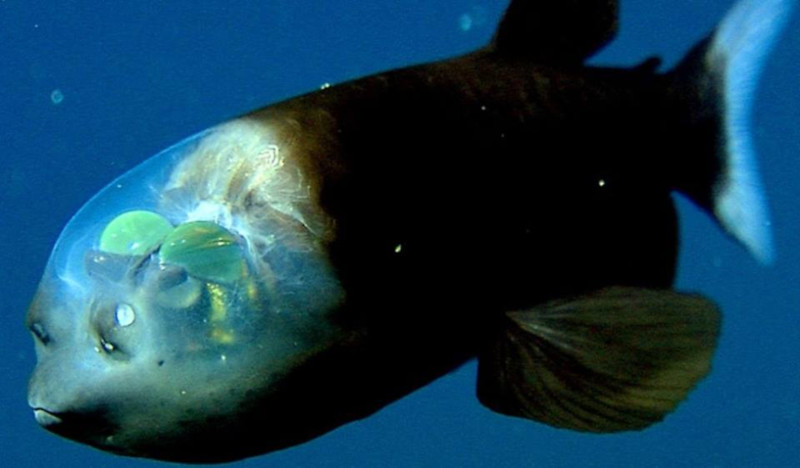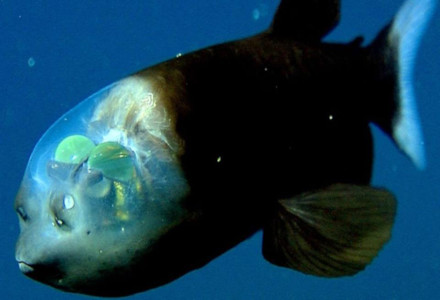
Public Domain Image
Barreleye Fish Facts
- First of all, the the term Barreleye Fish actually refers to a small family of physically quite unique fish. Furthermore, all of these incredible creatures live deep in the depths of the Atlantic, Pacific, and Indian Oceans. The various species also live in both temperate and tropical regions.
- Also, the common name of the amazing group derives from the unique nature of the eyes. That holds true due to the fact that the orbs generally develop directed straight upward. This trait serves as an evolutionary adaptation that allows it to see the silhouettes of potential prey.
- In addition, the rather fascinating creature also evolved the remarkable ability to freely move both of its eyes independently of each other. Because of this distinctive trait, as well as other factors, people sometimes refer to the different members of this incredible group as the Spookfish.
Related Articles
Photo Credit: GreenAnswers.com
CC License: https://bit.ly/3iaSZvN
Barreleye Fish Physical Description
Most notably, given that the term Barreleye Fish refers to several different species, physical differences do exist. However, one trait all members of the group share involves the eyes. In fact, this characteristic remains the most distinguishing physical characteristic of every species of Barreleye.
That holds true due to the facts that these grow extremely large and also develop contained within a transparent dome of soft tissue. Furthermore, this dome sits on the head of the fish. This amazing covering serves to protect the vulnerable eyes from the attacks of predators. In addition, it also appears to serve to augment its vision.
In color, the astounding creature typically displays a dark brown, but varying shades appear. It also develops a covering of small, silvery scales. Sexual dimorphsim plays no noticeable role in any of the various species.
Most of the various types reach a size significantly less than 8 in (20 cm) in length. However, one rather exceptional species does attain a length of as much as 20 in (50 cm).The mouth stays rather small and toothless.
- Kingdom: Animalia
- Phylum: Chordata
- Class: Actinoperygii
- Order: Argentiniformes
- Family: Opisthoproctidae
Public Domain Image
Barreleye Fish Distribution, Habitat, and Ecology
Firstly, the varying types of Barreleye Fish inhabit the pelagic zone of the waters of the world. Further, individuals typically live at great depths, ranging from 1,312-8,200 ft (400-2,500 m). This range, therefore, places its natural habitat at just below the limits of light penetration.
Additionally, looking up with its large eyes, individuals locate their prey by their silhouettes. Meanwhile, this action allows it to remain unseen in the darker depths. This ability understandably provides members of the Family with a natural advantage over potential predators.
Finally, very few details of its reproductive habits are known. However, it does appear to be a pelagic spawner. Eggs and sperm are released into the water. Fertilized eggs remain buoyant, and rise to shallower depths. Once the juveniles reach adulthood, they descend to the deeper depths.
Species Sharing Its Range
Gulper Eel Cookiecutter Shark Sea Lamprey
Check out our other articles on 7 Amazing Australian Species, Northern Bald Ibis, Ebor Falls, Olive Ridley Sea Turtle, Guatemalan Fir, Giant Mesquite Bug, Tree Kangaroo

